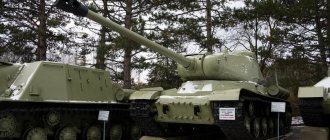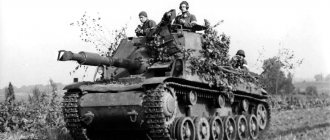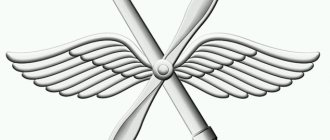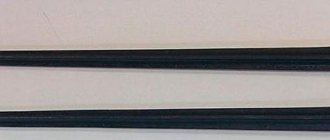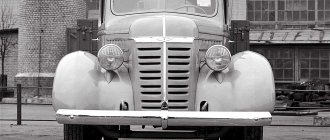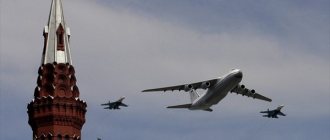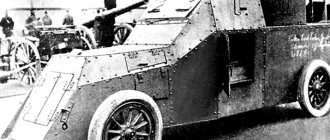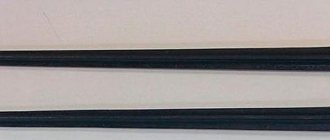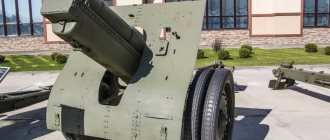During the Winter War, no one helped the Finns more than the Swedes: 135 thousand rifles, 336 guns, 300 sea mines, 50 million cartridges and 300 thousand shells. Food, medicine, spare parts, clothing... The volume of assistance in modern money amounted to about 1.6 billion US dollars. Mutual grievances between the two peoples were left in the past.
On the same topic
“I should have surrendered”: 6 “school” misconceptions about the Soviet-Finnish war
Sweden was not going to violate its more than century-old neutrality and risk war with the USSR. And yet Stockholm decided to send volunteers. This became an open secret - but the formalities were observed. Thousands of Swedish nationals, who made up two-thirds of all volunteers, “were not there.”
“There was no” in Finland and the 19th Air Flotilla of the Royal Swedish Air Force. Strictly speaking, such an air fleet - an air regiment in the Swedish nomenclature - never existed. But the next air unit, by a strange coincidence, received number 20.
The Carlsons go to war
The armed forces of neutral Sweden were small. A third of all the kingdom's military aircraft, dozens of pilots and hundreds of ground staff were secretly sent to save the Finns.
The “non-existent” air fleet consisted of less than 20 aircraft. These were twelve British Gloster Gladiator biplanes of the Mk. Is and Mk. IIs; four Hawker Hart light biplane bombers, assembled in Sweden under British license; training Raab-Kazenstein 26 and transport Junkers F.13. Then several more were added to them - in total, 24 Swedish aircraft visited Finland.
The personnel were mainly recruited from the 4th and 8th air flotillas.
The pilots had a lot of enthusiasm, but the situation with skills was worse.
The Swedish General Staff was going to help their neighbors and give at least some of the pilots real combat experience.
Due to long delays, Swedish foot volunteers reached the front only for the last two weeks of fighting. Their fellow pilots ended up in Finland at the beginning of January - immediately after the battles of Suomussalmi and the Raat Road. They faced two months of war against the Soviet Air Force, which was superior in every sense.
On the same topic
5 Wars of Bloody Hjalmar
The Finns put Swedish aviators in charge of the defense of the skies of Lapland. The green paint of the Swedish Air Force was partially painted over with aluminum dope - this was the first time in world history that winter camouflage was used in aviation. Blue circles with gold crowns turned into Finnish blue swastikas, and Swedish tactical numbers turned into yellow letters of the Latin alphabet.
Formally, the Swedes, when crossing the border and after arriving at the Finnish Kemi airfield, became pilots of the 5th air regiment of the Finnish Air Force. Since they had to fight in the wilderness, where they did not speak Swedish, the aviators carried notes with them in Finnish: “I am a Swedish volunteer pilot.” Palevo - what to do? A parachutist speaking a foreign language could be mistaken by locals for a Soviet pilot - with all that that implies.
Initial state of affairs.
By the start of World War II, the Swedish Air Force was a ragtag collection of outdated aircraft such as the J-6 biplane
"
Yaktfalk
" and other foreign-made models.
Biplane J-6 "Yaktfalk".
The created government commission assessed their combat effectiveness as unsatisfactory. If the country was drawn into war, they would not be able to ensure the fulfillment of the tasks assigned to them and would be destroyed. It was necessary to urgently take appropriate measures to correct the current situation. The first step was the purchase of a batch of modern aircraft abroad. The aircraft were purchased from the USA ( Republic P-35A
called
J-9
) and in Italy (
Reggiane Re.2000 Falco
called
J-20
).
J-20 fighter.
J-9 fighter.
However, the country's leadership understood that these were only temporary measures and if an embargo was imposed on the supply of military equipment, they would be left with nothing. It was necessary to establish the creation of our own fighters. The main hope here lay with the young company SAAB
.
Lake inhabitants and Colonel Owl
The Lapland theater of operations is a dense taiga with narrow roads, sparse settlements and countless lakes, which in winter were the only fragments of flat surface without trees suitable for creating an airfield. The first base for the aircraft was a frozen lake 15 km northeast of Rovaniemi - the Oscar base. The chassis of all cars was replaced with skis.
Repainted Swedish Gladiator
Soviet aviators were also based on lakes. The enemy of the Swedes was the air group of the northern direction under the 9th Army of the Red Army. It is also the “Filin air group” after the surname of the commander, Colonel Vasily Mikhailovich Filin.
Its core was the 145th Fighter Aviation Regiment, newly assembled from the squadrons of the 20th and 38th IAP. He had at his disposal several dozen I-15bis fighters. Some of the pilots already had combat experience: Lake Khasan, Khalkhin Gol, Spain. Filin’s group also included a squadron of DB-3 bombers and a squadron of P-5 reconnaissance aircraft. Soviet pilots have already opened the account: on December 24, Captain Sokol shot down a reconnaissance Junkers W.34.
Following the only successfully advancing division of the 9th Army, the 122nd Infantry, Soviet aviators began to establish forward bases on the lakes closer and closer to Rovaniemi.
Swedish aviators set out to bomb one of these bases on January 12th.
Technical characteristics of the J22 fighter.
Let's take a closer look at the FFVS J 22 fighter.
FFVS
team and was a cantilever monoplane with a mid-wing arrangement. It had a mixed wood and steel structure that was easy to manufacture.
J-22A fighter
The aircraft was equipped with a localized version of the American Pratt & Whitney R-1830-SC3-G Twin Wasp
. It was a 14-cylinder air-cooled radial piston engine with a power of 1050 l/s. The maximum speed of the fighter is 575 km/h. Service ceiling 9300 m. Range 1270 km.
J-22 cockpit.
The experience that was gained during the creation of this fighter was very important in the subsequent development of the Swedish aviation industry.
The first fight is lumpy
All four Harts and nine Gladiators were to fly. However, due to severe frost, only four fighter engines were able to start.
The Swedes attacked a Soviet column that came across, and at 14:40 they appeared over the forward airfield on Lake Märkjärvi. Only Filin’s military pilots were not there. Shortly before lunch, they managed to relocate to Kairala airfield.
The Scandinavians dropped their bombs. Indiscriminate shooting began at an object that was not expecting a raid. Three Red Army soldiers were killed and three were wounded. Two U-2s and a non-flying I-15bis remained on the ice. They weren't hit. However, in the report, the Swedes reported two fighters shot down and three bombed.
The pilot of the Gloucester with airborne F Jacobi is still considered the first Swedish pilot to shoot down an enemy aircraft. Apparently, so that the future does not look completely hopeless.
At the exit from the attack, the Swedes had to slip between the hills at low altitude. Lack of experience took its toll. The formation fell apart, everyone tried to taxi on their own. Two Harts with side X and Y collided: one fell on the other. The pilots bailed out and were captured - including the commander of the bomber squadron. They returned to Sweden in May 1940.
The shooters were unable to leave the vehicles before they fell. One of them collapsed to the ground in the car and died - from a note found on him, the Red Army command learned that the Swedes had appeared in the air. Fate turned out to be more favorable to the second, Sundsten. His Hart took a horizontal position and landed softly. He took his skis out of the plane and made the 90-kilometer trek in 40-degree weather, dodging Soviet patrols.
Hawker Hart is still officially Swedish
The remaining planes lost each other. On the way back, the Hart with airborne Z caught up with the Soviet flight that had risen to intercept. Military pilots Kryuchkov, Gromov and Bondarenko chalked up victory: they riddled and forced the enemy to land on a frozen swamp. The crew waited in the thickets while the fighters spent ammunition on the fallen vehicle, and then took out their skis and reached the Finnish units.
In the first battle, the Swedish air group lost three of its four bombers. Miraculously, the car survived, where the regiment commander, Major Bekhammar, was in the place of the shooter.
J-19 fighter project.
According to Air Force
SAAB chief designer Fried Wannström
began developing several projects.
One of them J-19
, was designed as a classic monoplane with an air-cooled engine, the estimated speed was 605 km/h with a flight weight of 2690 kg.
J-19 fighter project.
The design of the aircraft was all-metal. The chassis is tricycle, with a wide track and a tail wheel. The struts and wheels were retracted into the wing and center section, completely covered with shields. Armament could consist of two 8-mm machine guns, which were installed above the engine, and four 13.2-mm machine guns in the wing. However, due to a number of reasons, this fighter was not brought into mass production.
The military department gave preference to another fighter FFVS J 22
, which was created according to a similar scheme.
SAAB ,
in addition to developing the
B17
and
B18
, began creating a fighter using a two-boom design, which later received the
SAAB J21
.
J-21A fighter.
This unique machine became the only serial fighter in the world that was produced with both a piston and a turbojet engine. We will look at it again in one of the following reviews.
Dog dumps over Lapland: not Narva, but not Poltava either
After a while, the single “Hart” was joined by another one. They made occasional raids on Soviet targets until the end of the war without much success. On January 22, Hart attacked the base of the 145th Regiment at Kairale, but even Finnish sources do not mention the damage caused. On February 18, one of the bombers in a night raid reported damage to a Soviet I-15 on the field... which Soviet data does not confirm.
Swedish fighters concentrated to cover the skies over Rovaniemi, Kemi, Oulu and Kemijärvi. Twelve vehicles, divided into fours and pairs, were supposed to protect a huge space with multiple Soviet superiority. It didn't work out very well.
Frost and technical issues added to the problems. On January 16, a pair of “gladiators” rose three times to intercept Soviet bombers in the Oulu area with inoperative machine guns: the Swedes were about to ram them. There was no need for a ram: Soviet planes never found Oulu that day.
The first mid-air collision occurred the next day, January 17. The four “gladiators” met the four “I-15bis”. What happens next is not entirely clear. There was no fight as such. The Swedes fired a couple of bursts from afar. The Soviet pilots retreated. The Scandinavians, despite their superior speed, did not pursue.
I-15bis on a ski chassis
The next day, radio interception revealed that the 145th Regiment had lost two fighters. Lieutenant Bondarenko made an emergency landing in the forest after the engine overheated; the plane could not be restored. The second crashed during landing, Lieutenant Venediktov was wounded.
The Swedes recorded two victories for Fenrich Martin and Salven - the good stuff must not be wasted.
The real battle took place on January 23. Four Swedes under the command of Fenrich Jacobi set out to intercept Soviet fighters who were shooting at Finnish infantry near Märkjärvi. The Swedes reported that they met four I-15bis. Soviet sources speak of Lieutenant Konkin’s flight, as was customary in the Red Army Air Force, of three vehicles.
The armament of the aircraft was almost the same. However, Soviet pilots were protected by armored backs, while British aircraft did not have them. However, the Swedes did not shoot very accurately: after the battle they found 25, 14 and two holes in three Soviet vehicles, although the Scandinavians used up most of the ammunition.
Lieutenant Konkin shot better. Fenrich Sjökvist's fighter exploded in the air. Then a flight of high-speed I-16s appeared on the horizon. The Scandinavians considered it best to leave the battle while it was possible.
On January 26, the Swedes almost lost two more cars. Two pilots got lost in the fog and landed at one of the Soviet bases instead of their base. Under fire, they barely managed to rise into the air and fly away.
In 1939-1940, Swedish pilots fought against Soviet pilots
Formally, the Kingdom of Sweden has not been at war since 1814. Then the Swedish-Norwegian war occurred. Many people think that the last major battle in which the Swedes and Russians participated was the Battle of Poltava in 1709. But that's not true.
The last time the two countries crossed arms was during the war of 1808-1809, during the so-called Finnish War, as a result of which the Principality of Finland became part of the Russian Empire. There are also known clashes between the Soviet Baltic Fleet and the Swedish Navy during World War II. We talked about how in 1952, the country’s air defense fighters shot down a Swedish Air Force DS-3 radio reconnaissance aircraft and a Catalina search flying boat over the neutral waters of the Baltic Sea - see the article “Everyday life of the Soviet air defense. Part 1"
. And in this article we will talk about fierce air battles unknown to a wide circle of readers between Swedish and Soviet pilots during the Winter or Soviet-Finnish War of 1939 - 1940.
Winter War
The second half of the 30s of the twentieth century was alarming. There was a premonition of a big war in the air. Every European country sought to solve its international problems before the guns started talking. Relations between the USSR and Finland in the 20s and 30s were difficult. Immediately after the 1917 revolution in Finland, in fact, there was a small civil war. The White Finns prevailed, which is not surprising, given the mentality of the inhabitants of Finland. The Bolshevik leaders, understandably, did not like this, but the civil war was in full swing, and Moscow had no time for Finland. The Finnish leadership, meanwhile, made a decision that, 20 years later, actually led to the Winter War. In 1919, the country provided its naval bases and airfields to the British armed forces as they fought Soviet Russia. Real naval battles unfolded in the Gulf of Finland. Both sides suffered serious losses. The British captured two of the newest Novik-class destroyers, Avtroil and Spartak. Three more Noviks - Gabriel, Konstantin and Svoboda - were lost in a minefield. The 1st rank cruiser Oleg was sunk by English torpedo boats. The Soviet submarine Panther sank the newest English destroyer Vittoria, the British submarine L-55 was blown up and killed by mines, and two English cruisers Cassandra and Verulam were damaged. Separately, it is worth mentioning the attack by the British on Kronstadt, but more on that later.
In the second half of the 30s, the Soviet-Finnish border passed 32 kilometers from Leningrad. The Soviet military command was well aware of the danger of this fact, and after a series of meetings in the Politburo, the USSR entered into negotiations with Finland, including on the issue of exchanging territories. Negotiations failed. The Soviet Air Force bombed Helsinki. The Winter War has begun. On December 14, 1939, the USSR as an aggressor was expelled from the League of Nations. Now some historians argue that this was aggression on the part of the USSR. The Finnish army, aviation and navy were significantly weaker than the Leningrad Military District and the Baltic Fleet. This is true. The Finnish armed forces were intended only for the defense of their country. But the danger of Finland to the USSR was not in the number of soldiers, guns, planes and ships, but in something completely different. Finland, as was already the case in 1919, could provide its bases to a much stronger enemy. The General Staff of the Soviet Army remembered the “Kronstadt Reveille” very well. This English operation was prepared in advance and in secret. The torpedo boats were delivered to Sweden and then secretly transferred to Finland. The boats were based at secret bases in Terijoki (now Zelenogorsk) and Björk (now Primorsk). SMV-type boats carried two torpedoes and had a speed of 40 knots. Simultaneously with these events, the English seaplane carrier (hydroair transport) Vindictive arrived in the Baltic Sea with Short-18 seaplanes on board. On August 18, 1919, using bases in Finland, the British carried out a combined attack on Kronstadt. First, the Kronstadt raid was attacked by British planes. The blows they struck were distracting. The main blow was to be delivered by seven British SMV-type torpedo boats. Their task was to sink the main ships of the Baltic Fleet. True, this attack did not bring much success to the British. They sank the submarine mother ship (an old disarmed cruiser) “Memory of Azov” and easily damaged the battleship “Andrei Pervozvanny”, losing four torpedo boats. At that time, this attack by the British brought a lot of noise; each side took credit for the victory in the operation, although, in fact, it was a “draw.” After the Kronstadt Reveille, the defense of the base from aircraft and torpedo boats was sharply strengthened. The main result was the understanding by the leadership of the Red Army of the fact that the danger of the Finnish direction lies in the possibility of foreign military bases appearing in Finland.
On this topic
2136
Putin spoke about working as a taxi driver in the 1990s
In 1990s Russia, Vladimir Putin was a private cab driver. The head of state spoke about how he had to earn a living in difficult times for the whole country and for him in particular in the film “Recent History” of the Rossiya 24 TV channel.
The results of the Winter War can be assessed differently. Historians with different ideologies draw exactly the opposite conclusions. We will note the main fact. After the end of the Winter War, the danger of attacks such as the Kronstadt Reveille for Leningrad and Kronstadt decreased sharply. The USSR solved this problem, probably not entirely humanely, but the times then were completely inhumane.
Swedish falcons
When the Winter War began, many countries provided assistance to Finland. But the largest amount of assistance was provided by the Kingdom of Sweden. The Swedes supplied the Finns with 135,000 rifles and 50 million cartridges for them, 336 guns of various calibers and 300,000 shells, 300 sea mines. The volume of aid in today's prices amounted to about $1.6 billion. But the kingdom decided not to stop there. It was decided to send an air flotilla to help their neighbors - as the Swedes then called an air regiment - planes with pilots and technical personnel. This was, of course, an open secret - all interested persons and organizations knew about everything, but formally Sweden maintained its neutrality. Thousands of Swedish volunteers in all branches of the military, who made up two-thirds of all volunteers who came to this war, “were not there” in Finland. An entire aviation regiment also “wasn’t there.” Interesting moment. It was decided to transfer the 19th air flotilla of the Swedish Air Force to Finland. This number in the Air Force of the Scandinavian kingdom remained unoccupied. The next air flotilla that was formed was numbered 20.
In total, dozens of pilots, hundreds of technicians and 20 aircraft went to war. 12 British “Gloster Gladiator” biplane fighters of the Mk.Is and Mk IIs modifications, 4 “Hawker Hart” light biplane bombers, which were assembled in Sweden under a British license, were sent to Finland; 1 training “Saab Kazenstein-26” and 1 transport “Junkers F.13”; and two more planes. Later, several more cars were added. So the total number of aircraft became 24. Volunteer pilots mainly came from the 4th and 8th air flotillas. The secret thought of the Swedish General Staff was to test as many of its pilots as possible in real combat conditions. The Finnish command determined the area of responsibility of the Swedish regiment - the defense of the skies of Lapland. The green camouflage of the Swedish Air Force was painted over with white paint - winter camouflage was applied to the aircraft. Blue circles with three crowns were turned into white circles with a blue swastika - the emblem of the Finnish Air Force. The numbers on board the aircraft - like those in the Swedish Air Force - were painted over and painted with yellow letters of the Latin alphabet - the designation in the Finnish Air Force. So the 19th Air Flotilla of the Swedish Air Force turned into the 5th Air Regiment of the Finnish Air Force. Since they had to fight in the Finnish outback, where no one knew Swedish, all pilots were given a Swedish-Finnish phrasebook. This was done so that in the event of a plane being shot down, local residents would not carry out lynching of the pilot.
War
Lapland as a theater of war is a dense taiga with narrow roads and lakes. The enemy of the Swedish pilots was the northern air group of the 9th Army. The air group included the 145th Fighter Regiment (several dozen I-15bis fighters), a squadron of DB-3 bombers and a squadron of P-5 reconnaissance aircraft. On December 24, the Soviet air group shot down its first aircraft, the Junkers W/34 reconnaissance aircraft. On January 12, the Swedes flew out on their first mission - the bombing of one of the advanced Soviet airfields. 4 “Hawker Harts” and 9 “Gloster Gladiators” were supposed to fly on the mission. The failures began even before takeoff. Due to severe frost, only 4 aircraft were able to start their engines. There were no combat aircraft at the advanced Soviet airfield - there were 2 U-2s and a non-flying I-15bis stationed there. They weren't even hit. On the way back, two Hawker Harts collided in the air and fell to the ground. Two pilots were captured by the Soviets, one gunner died, the second survived the fall. He made a 90-kilometer trek on skis at 40 degrees below zero and reached the location of the Finnish troops. This is how the Soviet command learned about the appearance of Swedish pilots in Finland. But this was not the end. The third bomber was shot down by I-15bis scrambled to intercept from another airfield. So in one battle the Swedes lost three of their four bombers.
On this topic
1422
Bochkarev: More than 200 social facilities are planned to be built in Moscow in 2022-2024
According to Deputy Mayor of Moscow for Urban Development Policy and Construction Andrei Bochkarev, the construction of 213 social facilities is planned in the capital in 2022-2024.
To the remaining “Hawker Hart” a few months later another one was added, distilled from Sweden. These two bombers flew raids until the end of the Winter War. The weather made its own adjustments. So, due to severe frosts, fighters took off to defend the city of Oulu with frozen, inoperative machine guns. The Swedish pilots were ready to ram. Fortunately, during these frosty days, Soviet aviation did not bomb Oulu. The first mid-air collision occurred on January 17. Four “Gloster Gladiators” met four I-15bis in the air. The further course of events is not entirely clear. The Swedes opened fire, the Soviet pilots avoided the battle and left. The Swedes did not pursue them. The next day brought clarity. The 145th air regiment suffered its first losses. Two I-15bis made an emergency landing. Whether it was caused by the fire of Swedish fighters, or frosts, is now not clear.
The first serious battle took place on January 23. Four Swedish fighters were scrambled to intercept Soviet planes shooting at Finnish infantry. On the Soviet side there were three I-15bis. The Soviet pilots were saved by armored backs. After the battle, there were up to 25 holes in the Soviet planes, but the pilots were alive. The Swedish planes did not have armored backs, and things were much worse. One fighter was shot down. On January 26, an almost comical incident occurred. Two Swedish fighters lost their bearings in the fog and... landed at a Soviet airfield. True, having realized their mistake, they managed to take off.
One of the main tasks of the Swedish pilots was to prevent Soviet bombers from breaking through to Finnish cities. The Swedes could not always boast of results, but there were victories. Although the Swedes considered the thwarted bombing of the Finnish city to have completed their combat mission. The Swedes talk about 35 bombings that were thwarted. However, they shot down only two SB-2s. The overwhelming number of Soviet vehicles fired at by Swedish fighters reached their airfields.
On February 21, a big international scandal occurred. Seven Soviet SB-2s managed to get lost, and instead of Finnish Rovaniemi they bombed the Swedish village of Payala. The distance between the Finnish and Swedish settlements was more than 100 kilometers! Two civilians were injured.
In the last days of the war, luck finally smiled on the Swedes. Swedish fighters shot down two Soviet SB-2s, and most importantly, they shot down one heavy bomber
TB-3. His photo on earth spread all over the world. Interesting point. Six TB-3 bombers took part in the battle, one of which was commanded by Captain Nikolai Gastello. Then he safely brought his bomber to the airfield. On the same day, the Swedes suffered their last loss in the Winter War. One of the Gloster Gladiators was undergoing a test flight after repairs and fell apart in the air. The pilot died.
Conclusion
On March 13, the war ended and the Swedish pilots, like other Swedish volunteers, returned home. Swedes' losses included three dead pilots and two prisoners. They lost three bombers and three fighters. The Soviet Union lost one TB-3 and three SB-2. The loss of two I-15bis is not confirmed by official Soviet sources. They were practically unable to prevent Soviet bombers from bombing Finnish cities. But the Swedes gained invaluable experience. The kingdom's air force was increased to 800 aircraft, and, most importantly, the Swedes began to build combat aircraft themselves. Currently, the Swedish school of aircraft construction is one of the most advanced in the world.
Carlsons against bombers
From the end of January, Filin’s group and bombers from the air group of the 14th Army began a large-scale air attack on northern Finnish cities. On January 29, a major raid on Rovaniemi was disrupted due to cloud cover. Two days later, 36 SB-2s and DB-3s dropped 27 tons of bombs on the city. The Swedes could not stop them, although they tried.
Long-range bomber DB-3
On February 1, forty Soviet bombers landed on Rovaniemi. They attacked in five groups from different directions. The Swedes missed the first, but in the second, Fenrich Salven managed to shoot down an SB-2 of the fifth mixed air regiment, making more than two hundred hits. The entire crew of Lieutenant Babkin died. This became the first objectively confirmed victory of Swedish fighters. The gunners of the Soviet bombers announced the destruction of three enemy fighters, but the Swedes had no losses.
By mid-February, a dozen Swedish fighters were supposed to cover a 200-kilometer front from increasingly numerous Soviet bombers.
The Swedes believe that they foiled 35 bombings; Soviet sources regard this thesis with great skepticism.
On the same topic
Unpredictable “colossus without a head”: German conclusions about the Russian army
Most of the Soviet bombers, damaged by fighters, managed to reach the bases. The fate of Lieutenant Danilenko’s SB-2, which the Swedes announced on February 21, was shot down is still unknown.
In most cases, Scandinavians and Soviet military pilots simply did not meet each other in the sky. This was facilitated by the weather, and the not too great professionalism of the overworked Swedish pilots... and the “outstanding” skills of the pre-war Soviet bomber crews, which led to a big scandal and “debriefings” in the Kremlin.
On February 21, seven Soviet SB-2s managed to get lost and, instead of Rovaniemi, dropped bombs on the Swedish village of Payala, more than a hundred kilometers from the target. True, out of 150 bombs, only a few hit the village and the raid cost the Swedes two wounded civilians.
